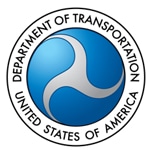
Police said Wednesday that seven people had died, after the death toll had risen to six earlier when Temple University Hospital officials confirmed one patient had died of their injuries overnight.

Police said Wednesday that seven people had died, after the death toll had risen to six earlier when Temple University Hospital officials confirmed one patient had died of their injuries overnight.

The FRA’s Confidential Close Call Reporting System (C3RS) allows any employee to anonymously report safety-related issues or concerns without fear of facing sanctions. The C3RS program is the first of its kind in Massachusetts.
At a ceremony held at Keolis’ Boston headquarters, officials from the American Train Dispatchers Association, Transportation Communications Union, Brotherhood of Locomotive Engineers and Trainmen, and SMART Transportation Division joined MBTA, Keolis and FRA representatives to sign the memorandum of understanding to implement the voluntary reporting system.
Read more from Progressive Railroading.
Valley View, Texas – A freight train has derailed in North Texas during stormy weather leaving 17 cars off the tracks and four crewmembers slightly hurt.
BNSF Railway spokesman Joe Faust says the derailment happened early Friday near Valley View, 50 miles northwest of Dallas. Four engines and 13 cars derailed.
Faust says the southbound train was hauling a variety of freight to the Fort Worth area, but no hazardous materials. Nothing spilled.
Read more from ABC-13.

But as firms such as Exxon Mobil Corp., Hess Corp. and CSX Corp. led one last lobbying blitz, several environmentalist and labor organizations paid their first visits to the White House’s Office of Information and Regulatory Affairs (OIRA) as it weighed the final regulations.
John Risch, national legislative director for the SMART union’s transportation division, said his group’s March 30 meeting at OIRA stemmed from a desire to do “something different” about the oil safety rule, which touches on everything from train speed to tank car design. OIRA is a small but influential part of the Office of Management and Budget that analyzes the costs and benefits of a given rule before it goes public.
“I saw actually a press clip that the railroads had met with [OIRA] and I thought, ‘Wow, I’m missing a step here,’ so I requested to meet with them,” Risch said, noting that SMART-TD had filed comments on an earlier draft of the crude-by-rail rule in addition to working with the Federal Railroad Administration.
Earlier in the month, representatives from the environmental group Earthjustice sat down with OIRA to call for a ban on the oldest, least crash-worthy type DOT-111 tank cars still used to haul thousands of barrels of crude across the country each day. Other organizations present at the March 13 meeting included ForestEthics, Riverkeeper and the Sierra Club, all of which have voiced concerns about a string of recent oil train derailments and explosions.
Earthjustice again met with OIRA on April 15, just two weeks before the release of the final rule.
“We’re starting to see more and more people get engaged on this rule because these tank cars are rolling through towns and communities across the country,” said Jessica Ennis, a senior legislative representative with Earthjustice who lobbies on a range of topics important to the organization. “Every time there’s another explosion, more people are realizing that carrying crude oil by rail is actually very dangerous.”
The new Department of Transportation rule aims to make that process less dangerous by toughening new tank car standards and requiring shippers to update older cars on a 10-year time frame. The rule also caps oil and ethanol trains’ speed limits at 40 mph through most big cities and 50 mph elsewhere.
Environmentalist groups have been largely critical of the final rule, noting that it applies only to trains with 20 or more tank cars and follows a too-leisurely phaseout schedule.
Risch of SMART-TD is more satisfied with the rule.
At the meeting he called for in March, Risch pushed transportation regulators to make railroads add electronically controlled pneumatic brakes — a technology the North Dakota native hailed as “the greatest safety enhancement I witnessed in my 30-year career as a locomotive engineer.”
The final rule would require trains carrying 70 or more cars of the most flammable kinds of crude to use ECP brakes by 2021 or face a 30 mph speed limit, with other “high-hazard flammable unit trains” following suit by 2023.
The rail, oil and tank car industries had fought an ECP braking mandate as expensive and unnecessary, with Ed Hamberger, head of the Association of American Railroads, calling their requirement a “rash rush to judgment” on the part of DOT.
Risch acknowledged that the shift to ECP technology would come at a cost but called DOT’s 2021 initial deadline a “reasonable approach.”
“It’s not radical like it’s being portrayed,” he said.
Green groups led by Earthjustice had hoped for faster and broader application of ECP brakes, which government analyses said would reduce the severity of oil train accidents by up to 36 percent compared to regular braking systems.
Environmentalists had also sought to draw attention to the towns affected by the DOT rulemaking, with Ennis of Earthjustice helping schedule a conference call between Obama administration officials and council members from several cities.
“I think these meetings are extremely important, especially with local elected officials — they’re closest to where these accidents can happen across the country,” Ennis noted. “They have a unique, on-the-ground perspective on this that’s very important for the DOT to hear.”
Shannon Williamson, a City Council member in Sandpoint, Idaho, participated in the April 15 conference call with OIRA and called the conversation an “absolutely critical opportunity.”
Sandpoint is a hub for westbound crude from North Dakota’s Bakken Shale play, where the bulk of the nation’s oil-by-rail shipments originate. Oil train traffic rose from about 15 oil trains per week to 23 in the span of a year, said Williamson, who is also executive director of the environmental nonprofit Lake Pend Oreille Waterkeeper.
She added that her town is about the same size as Lac-Mégantic, Quebec, where a 72-car train hauling Bakken crude derailed and exploded in July 2013, killing 47 people.
That disaster set into motion the rulemaking unveiled Friday, which was a joint effort between U.S. and Canadian regulators.
“The oil industry had lobbyists in the administrative offices practically every single day during this whole rulemaking,” Williamson said. “The people who are going to be impacted by oil-by-rail transport are not being adequately represented — or they weren’t.”
This story was written by Blake Sobczak and originally appeared on EnergyWire and was reposted with permission from Sobczak.

U.S. Senator Charles E. Schumer announced legislation that would help protect local communities that experience dangerous oil tanker cars barreling through their backyards every day by providing an incentive for companies to phase out older, dangerous tanker cars sooner rather than later.
Schumer has long fought to get these tanker cars that carry volatile crude, which are prone to explosion in a derailment, off the rails and out of communities as soon as possible. Schumer explained that the Hazardous Materials Rail Transportation Safety Improvement Act of 2015, which Senator Schumer introduced along with Senators Wyden, Feinstein, and Merkley, would reduce risks to communities near railroad tracks by speeding up the phase-out of older tank cars and encouraging companies to replace them with newer, safer cars.
This legislation would establish a $175 fee on the oldest and most dangerous tank cars used to ship crude oil and would use the revenue from that fee to provide grants to communities for emergency preparedness, first responders, and additional inspectors. In addition, it would make available a tax credit for companies that upgrade their tank cars to the highest required safety standard within three years.
Read more from Politicalnews.me.

Washington, D.C. — The Transportation Trades Department, AFL-CIO (TTD) and its 32 member unions hosted a Roundtable with Transportation Secretary Anthony Foxx April 30 to urge action on a broad policy agenda unveiled by TTD unions in February:
“Washington, DC is too often defined by dysfunction and inaction,” said TTD President Edward Wytkind, following the Roundtable. “Today’s dialogue with Secretary Foxx focused on how we can cooperate to break this cycle of gridlock and make meaningful progress on the transportation issues that confront the nation.”
“Working to ensure critical investments in our transportation system has always been one of TTD’s greatest strengths,” said Secretary Foxx. “At the Department of Transportation, we recognize our transportation union partners as essential allies in keeping workers safe and maintaining America’s competitiveness in the global economy.”
A major topic of discussion is how the Administration can work with TTD affiliates and Congress to finally complete the rewrite of several overdue transportation laws including the highway/transit, aviation, rail safety, Amtrak and hazardous materials reauthorizations.
“Our unions emphasized the need for action on legislative initiatives that protect good transportation jobs, expand transportation investments and address mounting safety threats,” Wytkind said. “We also warned against wrongheaded reforms that would undermine collective bargaining rights or worker protections in our laws.”
TTD affiliates pressed for strong enforcement of aviation trade agreements to ensure U.S. airlines and their employees can compete on a level playing field. And TTD unions urged more action to fortify and expand the U.S.-flag maritime sector and specifically the Maritime Security Program.
“We will continue to engage on globalization and trade issues that if left unchecked, threaten to destroy the middle class jobs that for decades have been the cornerstone of the transportation sector,” Wytkind added.

Washington, DC – April 28, Congressman Donald Norcross (D – N.J.) introduced his first bill, H.R. 2074, the Toxics by Rail Accountability and Community Knowledge (TRACK) Act, to improve hazmat-by-rail safety by implementing a series of recommendations made by the National Transportation Safety Board (NTSB) following the 2012 train derailment in Paulsboro, New Jersey. Since being sworn in to Congress in November of last year, Rep. Norcross has worked closely with Senator Bob Menendez and local officials on legislation designed to avoid catastrophes like the one that occurred in Paulsboro, while working to benefit from the lessons learned from this accident.
On November 20, 2012, a freight train derailed in Paulsboro, New Jersey, causing several tanker cars to crash and spill toxic vinyl chloride into the atmosphere. Thanks to the efforts of the local first responders, State Office of Emergency Management, U.S. Coast guard, and countless others, the risk of injury was minimized. However, an estimated 1,500 people were forced to evacuate their homes.
In the wake of the accident, the NTSB conducted an independent investigation into the cause of the derailment and toxic chemical spill. The legislation introduced by Rep. Norcross addresses a number of the public safety concerns raised by the NTSB, while working to implement their recommendations into law.
“As Representatives in Congress, our top duty is to ensure the safety and security of our residents, which is why I have chosen to pursue these common-sense rail safety reforms in my very first piece of legislation,” said Congressman Norcross. “Following the 2012 train derailment in Paulsboro and other preventable public safety emergencies, we must ensure that rail users take steps to minimize the risk of an accident and provide recourse to those affected when companies fail to do so. These NTSB-supported recommendations will improve rail safety and expand protections for first responders and residents who live along train routes.”
“After years of study, the NTSB found that Conrail’s actions after the Paulsboro derailment endangered the train crew, local residents and first responders. But, the report also gave us a roadmap for how to improve the safety of shipping hazardous materials by rail—and this bill turns those recommendations into action,” said Sen. Menendez, who introduced the companion bill in the Senate. “No legislation can change the events of that day, or fully bring back peace of mind to the residents of Paulsboro, but I hope this legislation can be one step towards righting the wrongs that occurred and to forcing the railroads that operate in our communities to put public safety at the forefront.”
The TRACK Act will:

The rule:
Canada’s Minister of Transport, Lisa Raitt, joined Secretary Foxx to announce Canada’s new tank car standards, which align with the U.S. standard.
“Safety has been our top priority at every step in the process for finalizing this rule, which is a significant improvement over the current regulations and requirements and will make transporting flammable liquids safer,” said U.S. Transportation Secretary Anthony Foxx. “Our close collaboration with Canada on new tank car standards is recognition that the trains moving unprecedented amounts of crude by rail are not U.S. or Canadian tank cars – they are part of a North American fleet and a shared safety challenge.”
“This stronger, safer, more robust tank car will protect communities on both sides of our shared border,” said Minister Raitt. “Through strong collaboration we have developed a harmonized solution for North America’s tank car fleet. I am hopeful that this kind of cooperation will be a model for future Canada-U.S. partnership on transportation issues.”
Other federal agencies are also working to make transporting flammable liquids safer. The Department of Homeland Security (DHS), including the Federal Emergency Management Agency (FEMA), the Environmental Protection Agency (EPA), and the Department of Energy (DOE), in coordination with the White House, are pursuing strategies to improve safety. DOE recently developed an initiative designed to research and characterize tight and conventional crude oils based on key chemical and physical properties, and to identify properties that may contribute to increased likelihood and/or severity of combustion events that can arise during handling and transport.
This final rule represents the latest, and most significant to date, in a series of nearly 30 actions that DOT has initiated over the last nineteen months, including additional emergency orders, safety advisories and other actions.
Additional information about the rule:
(Unless stated otherwise, the rule applies to “high-hazard flammable trains” (HHFTs)—a continuous block of 20 or more tank cars loaded with a flammable liquid or 35 or more tank cars loaded with a flammable liquid dispersed through a train.).
Enhanced Standards for New and Existing Tank Cars for use in an HHFT—New tank cars constructed after October 1, 2015, are required to meet the new DOT Specification 117 design or performance criteria. The prescribed car has a 9/16 inch tank shell, 11 gauge jacket, 1/2 inch full-height head shield, thermal protection, and improved pressure relief valves and bottom outlet valves. Existing tank cars must be retrofitted with the same key components based on a prescriptive, risk-based retrofit schedule (see table). As a result of the aggressive, risk-based approach, the final rule will require replacing the entire fleet of DOT-111 tank cars for Packing Group I, which covers most crude shipped by rail, within three years and all non-jacketed CPC-1232s, in the same service, within approximately five years.
Enhanced Braking to Mitigate Damage in Derailments—The rule requires HHFTs to have in place a functioning two-way end-of-train (EOT) device or a distributed power (DP) braking system. Trains meeting the definition of a “high-hazard flammable unit train,” or HHFUT (a single train with 70 or more tank cars loaded with Class 3 flammable liquids), with at least one tank car with Packing Group I materials, must be operated with an electronically controlled pneumatic (ECP) braking system by January 1, 2021. All other HHFUTs must have ECP braking systems installed after 2023. This important, service-proven technology has been operated successfully for years in certain services in the United States, Australia, and elsewhere.
Reduced Operating Speeds—The rule restricts all HHFTs to 50 mph in all areas and HHFTs containing any tank cars not meeting the enhanced tank car standards required by this rule are restricted to operating at a 40 mph speed restriction in high-threat urban areas. The 40 mph restriction for HHFTs without new or retrofitted tank cars is also currently required under FRA’s Emergency Order No. 30.
Rail Routing – More Robust Risk Assessment—Railroads operating HHFTs must perform a routing analysis that considers, at a minimum, 27 safety and security factors, including “track type, class, and maintenance schedule” and “track grade and curvature,” and select a route based on its findings. These planning requirements are prescribed in 49 CFR §172.820.
Rail Routing – Improves Information Sharing—Ensures that railroads provide State and/or regional fusion centers, and State, local and tribal officials with a railroad point of contact for information related to the routing of hazardous materials through their jurisdictions. This replaces the proposed requirement for railroads to notify State Emergency Response Commissions (SERCs) or other appropriate state-designated entities about the operation of these trains through their States.
More Accurate Classification of Unrefined Petroleum-Based Products—Offerors must develop and carry out sampling and testing programs for all unrefined petroleum-based products, such as crude oil, to address the criteria and frequency of sampling to improve and ensure accuracy. Offerors must certify that hazardous materials subject to the program are packaged in accordance with the test results, document the testing and sampling program outcomes, and make that information available to DOT personnel upon request.
The actions taken today address several recommendations of the National Transportation Safety Board, including: requiring enhanced safety features for tank cars carrying ethanol and crude oil and an aggressive schedule to replace or retrofit existing tank cars; requiring thermal protection and high-capacity pressure relieve valves for tank cars in flammable liquid service, expanding hazardous materials route planning and selection requirements for trains transporting flammable liquids; inspecting shippers to ensure crude oil is properly classified and requiring shippers to sufficiently test and document both physical and chemical characteristics of haza
rdous materials; and providing a vehicle for reporting the number of cars retrofitted.
You can view a summary of the rule here and the entire rule here. For additional information on the steps the Department of Transportation has already taken to help strengthen the safe transport of crude oil by rail, please visit www.dot.gov/mission/safety/rail-chronology.

“This poster emphasizes a very important principle when it comes to prevention – that every worker has a voice,” said Assistant Secretary of Labor for Occupational Safety and Health Dr. David Michaels. “Workers need to know their rights and be able to use their rights, without fear of retaliation, when they believe that their safety or health is at risk.”
The newly designed poster informs workers of their right to request an OSHA inspection of their workplaces, receive information and training on job hazards, report a work-related injury or illness, and raise safety and health concerns with their employer or OSHA without being retaliated against.
The poster informs employers of their legal obligation to provide a safe workplace. In addition, it has been updated to include the new reporting obligations for employers, who must now report every fatality and every hospitalization, amputation and loss of an eye. It also informs employers of their responsibilities to train all workers in a language and vocabulary they can understand, comply with OSHA standards, and post citations at or near the place of an alleged violation.
Over the agency’s 44-year history, there have been several versions of the official OSHA poster, with the last update published in 2007.
OSHA’s “It’s the Law” poster is free and can be downloaded. Employers must display the poster in a conspicuous place where workers can see it. Previous versions of the poster do not need to be replaced.
Under the Occupational Safety and Health Act of 1970, employers are responsible for providing safe and healthful workplaces for their employees. OSHA’s role is to ensure these conditions for America’s working men and women by setting and enforcing standards, and providing training, education and assistance. For more information, visit www.osha.gov.